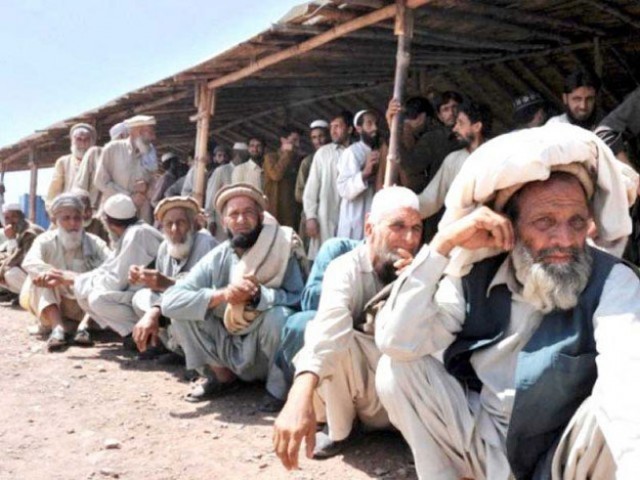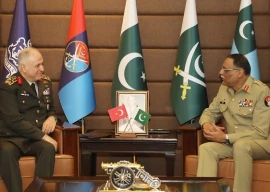
SOUTH WAZIRISTAN/ SHAKAI-TIARZA: Paving the way for the Dec 2016 return of all displaced families to the Federally Administered Tribal Areas (Fata), the authorities are investing heavily in the region’s infrastructure to ensure lasting peace.
“There are around 285 development schemes, costing around Rs3.85 billion in total, which are currently being worked on,” Lt-Col Imran told a group of journalists during a briefing. “These schemes include 135 solar-powered water projects, 82 schools, four health facilities and 61 markets with 1,050 shops,” he said.
However, Lt-Col Imran called these schemes ‘mere injections’ to stimulate development. “There is a wider range projects which will start in the near future just before the [displaced] families return,” he said.
Unyielding PCS, PMS officers: Strike threatened till chief secretary is removed
Providing details of some of the projects completed so far, Lt-Col Imran said two army public schools – one for boys and another for girls – have been built at Bala Pathar, an area which has traditionally been a source of dispute between the Mehsud and Wazir tribes.
The Wazirs believe Bala Pathar is a part of Shakai while the Mehsuds claim it is a part of Tiarza. To end the Mehsud-Wazir dispute, the two schools have been built at such distance so that it can benefit both tribes.
“Education, transportation and all other necessities at the schools for girls will be provided free of cost,” Lt-Col Imran said. “It has been made part of official policy that no school, whether private or public, will be without furniture.”
The military official added that 11 were also being built and 149 mosques had already been renovated.
“A total of 335 kilometres are now covered by an expansive road network as well,” Lt-Col Imran said. “There are also plans to renovate the Wana air strip and PIA is being contacted to begin service in the area.”
Risks and benefits: Over 1,500 journalists trained on safety measures
Lt-Col Imran said more and more families were returning after the repatriation of the Mehsud tribe was kicked off. “In the third phase of repatriation, we had estimated 10,000 families would return. But some 14,850 families came back,” he said. “By September, almost 80% of all the entire 71,000 displaced families will have returned.”
In addition to food ration and other supplies, returning families are paid Rs400,000 in compensation if their houses were fully damaged or Rs150,000 if their house were partially damaged. “A total amount of Rs1.93 million has been distributed among 5,576 families so far,” the military official said.
In another briefing at Spinwam, North Waziristan, Brig Shazul Haq Janjua told journalists that of the 136,000 families of Mir Ali tehsil, 82,000 families had returned.
He said that while the area was a hub of militancy in the time before the operation, the military has now secured its position up to the Khost border.
“There were houses with IEDs (improvised explosive devices) and IED factories,” he said. He added that although most of the IEDs in the area have been cleared, some places, in particular markets in Miramshah and Mir Ali which were IED factories, have been marked with red flags.
Published in The Express Tribune, May 22nd, 2016.

















































COMMENTS
Comments are moderated and generally will be posted if they are on-topic and not abusive.
For more information, please see our Comments FAQ